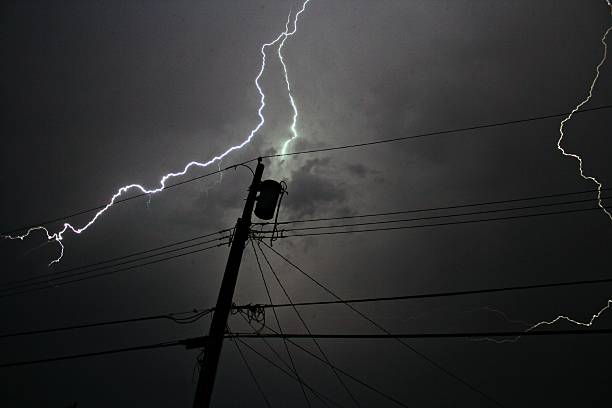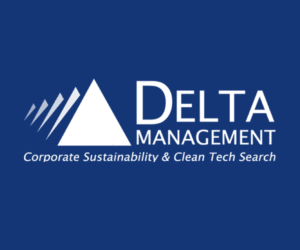Power for the People: Unlocking Community Access to Energy Storage
As Canada ramps up renewable energy deployment, ensuring a stable grid requires more than just wind and solar, it demands energy storage. Roby Douglas highlights how current regulations exclude communities, individuals, and Indigenous groups from participating in this critical infrastructure. By drawing parallels to the early days of solar Net Metering, he makes a powerful case for a standardized framework that supports distributed energy storage. Unlocking this potential would enhance grid resilience, accelerate climate goals, and ensure the benefits of the clean energy transition are shared more equitably across society.
Unlocking the Value of Distributed Energy Storage in Canada’s Energy Transition
As Canada accelerates its transition to renewable energy, a major infrastructure shift is underway. Wind and solar are playing an increasingly important role in how we generate electricity, but unlike traditional power sources, they are variable. Solar panels don’t generate at night, and wind turbines only produce when conditions are right. To maintain a stable and reliable grid, the country will require substantial investments in energy storage systems (ESS)—technologies that store energy when supply is high and release it when demand increases

Energy storage is widely recognized as a critical component of a low-carbon future. However, the regulatory frameworks across Canada are not designed to support widespread participation in this emerging sector. As it stands, most of the opportunity to invest in and benefit from energy storage is limited to large utilities and investor-owned entities. This approach overlooks the potential contributions of individuals, small businesses, community organizations, and Indigenous groups—many of whom are ready and willing to play a more active role in the clean energy transition.
“For families, businesses, and community centers, having access to reliable backup power is not just convenient—it’s essential.”
– Roby Douglas
Regulatory Gaps and Missed Opportunities
Currently, there is no standard policy in place that compensates smaller-scale or community-based energy storage owners for supporting the grid. This creates a structural barrier for non-utility stakeholders who might otherwise invest in storage systems. It also leaves unrecognized the value these systems could provide—helping balance the grid, reducing reliance on fossil fuel peaker plants, and improving overall system reliability.

This regulatory gap mirrors what existed before Net Metering was introduced for solar generation. Before those policies were adopted, solar installations faced many of the same challenges: high up-front costs, unclear return on investment, and no standardized way to contribute excess electricity back to the grid. Net Metering helped address those issues and played a key role in driving solar adoption in many jurisdictions. A similar approach could work for energy storage systems.
The potential scope of missed opportunity is considerable. Canada will require several gigawatts of new storage capacity over the next 20 to 25 years to meet its Net Zero targets. If only large utilities are positioned to build, operate, and benefit from that infrastructure, the economic participation of communities and individuals in the energy transition will remain limited. That means fewer local benefits, less innovation, and a slower overall rollout of critical infrastructure.
Community-Level Benefits of Energy Storage
Beyond grid services, distributed energy storage systems have clear benefits at the household and community level. As climate change increases the frequency and severity of extreme weather events, the number of power outages is expected to rise. Whether it’s a wildfire in British Columbia, an ice storm in Quebec, or a hurricane in Atlantic Canada, extreme weather is testing the resilience of our energy infrastructure. For families, businesses, and community centers, having access to reliable backup power is not just convenient—it’s essential. In such conditions, energy storage systems offer a critical source of backup power for homes, businesses, and essential services.

“Whether it’s a wildfire in British Columbia, an ice storm in Quebec, or a hurricane in Atlantic Canada, extreme weather is testing the resilience of our energy infrastructure”
-Roby Douglas
In remote communities—particularly Indigenous communities not connected to the main grid—energy storage can reduce or eliminate reliance on diesel generation, cutting costs and emissions while improving energy independence. When paired with renewable energy sources like solar or wind, storage can play a key role in supporting self-sufficiency and community resilience. Despite these advantages, the upfront costs of storage systems remain high. Without a framework that enables financial return through participation in grid services, most citizens and community groups have limited incentive—or ability—to invest.
A Standard Framework for Distributed Participation
One practical solution would be to develop a standardized, broadly applicable regulatory framework—similar in spirit to Net Metering—that enables individuals, communities, and smaller-scale actors to participate in energy storage markets. Such a framework could be implemented nationally or adapted across provinces and territories, offering a consistent policy structure to guide investment and participation.
Key elements might include:
- Compensation mechanisms for grid services provided by distributed storage, such as peak demand reduction, frequency regulation, and load shifting.
- Clear interconnection standards and metering rules that simplify the process of connecting to the grid, particularly for non-expert participants.
- Flexible ownership models, including community co-ops, Indigenous-led initiatives, or third-party aggregators.
- Incentives or financial support, such as tax credits, rebates, or low-interest loans, to reduce the capital cost burden of storage systems.
- Resilience protocols that ensure systems can seamlessly shift from grid support to backup mode during outages, maximizing their value and utility.
Such a framework would help unlock investment in energy storage at all levels, speeding deployment, enhancing grid flexibility, and spreading the economic benefits of the energy transition more widely across Canadian society.
Aligning with Broader Policy Goals
Supporting distributed energy storage aligns with Canada’s broader climate and energy priorities, including:
- Reducing greenhouse gas emissions
- Enhancing energy resilience and disaster preparedness
- Improving energy access and equity in remote and underserved communities
- Modernizing the electricity grid through decentralization and digital technologies
- Stimulating economic development in the clean technology sector
These objectives are difficult to achieve through a top-down utility-only model. By encouraging broad-based participation, policymakers can foster a more inclusive energy system—one that is both more resilient and more reflective of the diverse needs and capacities of Canadians.

Looking Ahead
Energy storage will play a central role in Canada’s path to Net Zero. How we structure access to this market will shape not just the reliability of our grid, but also who shares in the benefits of the transition. A clear, fair, and scalable policy framework for distributed energy storage can help ensure that communities, individuals, and smaller organizations are not just observers—but active contributors to a clean, resilient energy future.
As with solar Net Metering, the success of such a framework will depend on its clarity, accessibility, and consistency across jurisdictions. The opportunity is significant, and the case for action is growing stronger. With thoughtful policy design, Canada can unlock the full value of energy storage—technically, economically, and socially.














